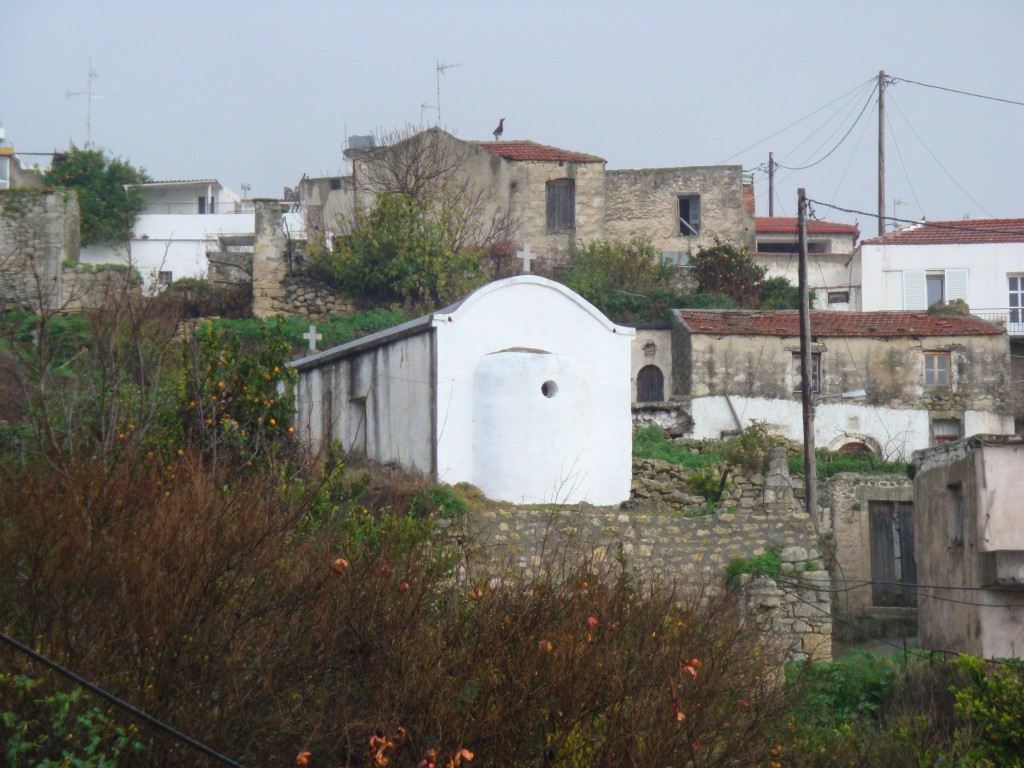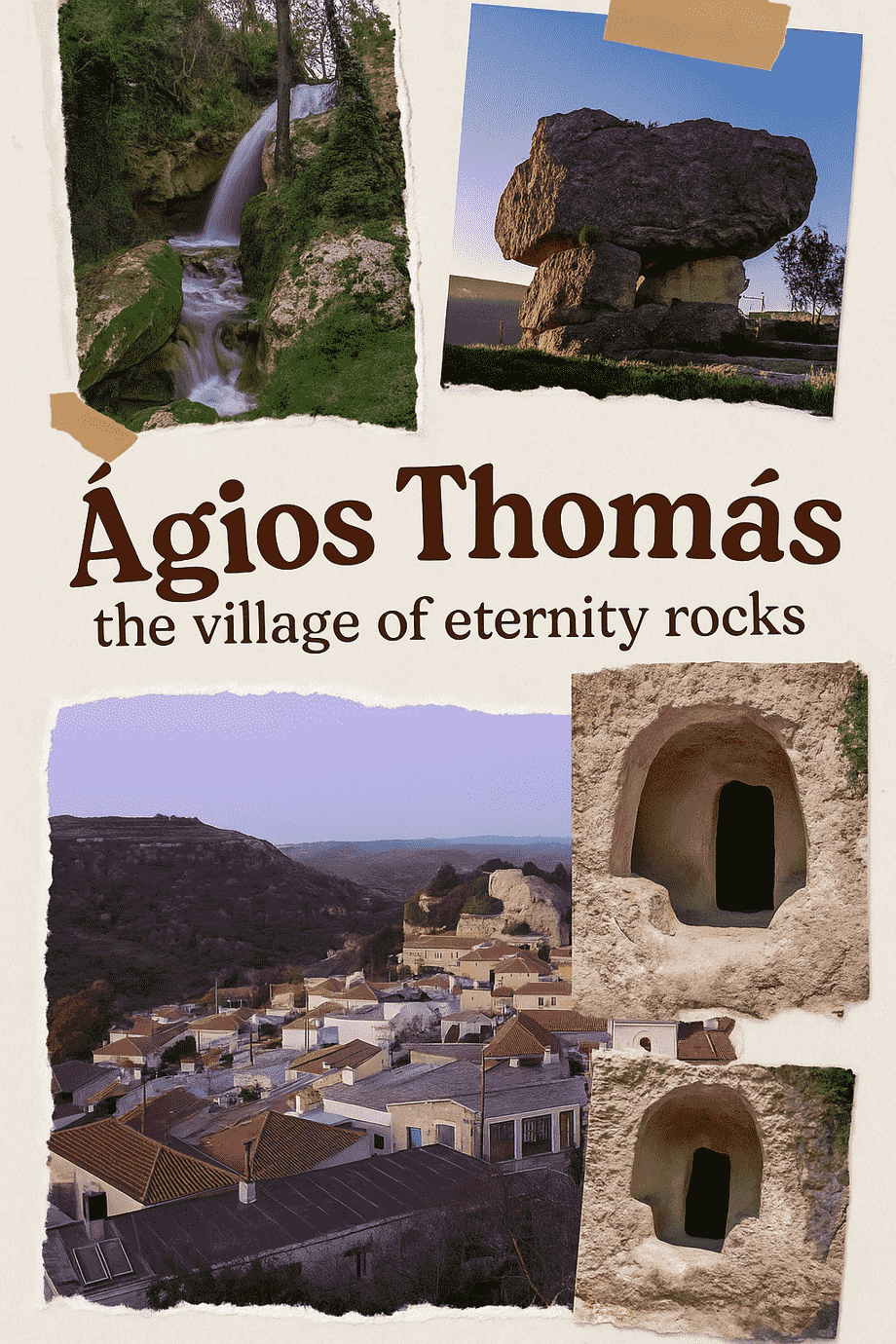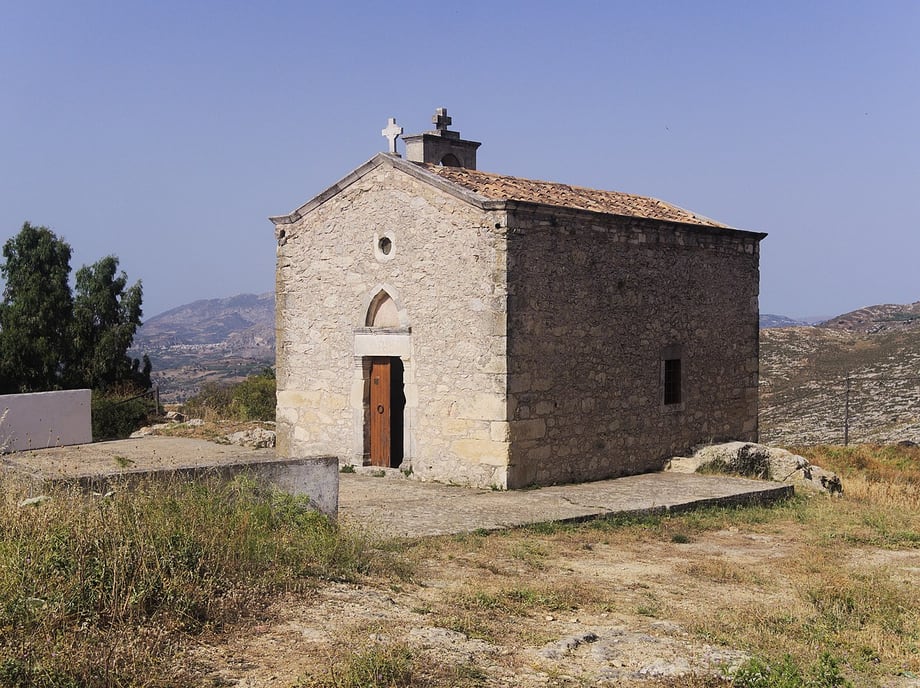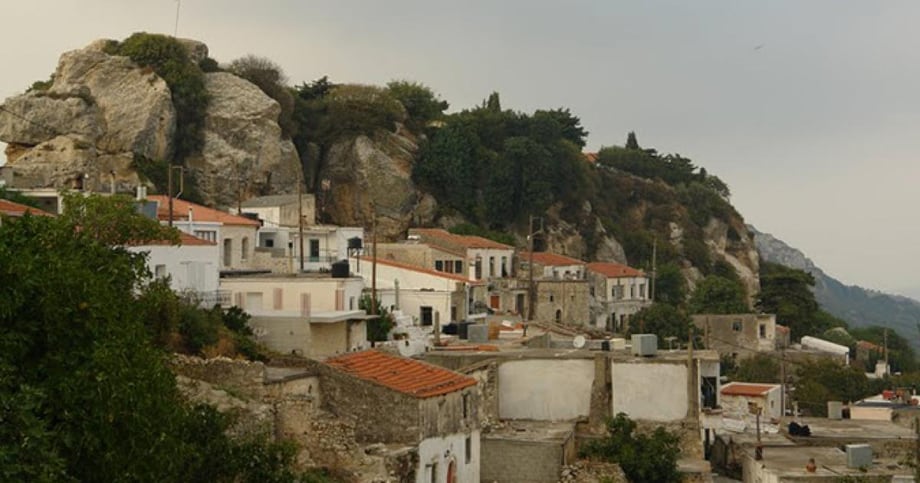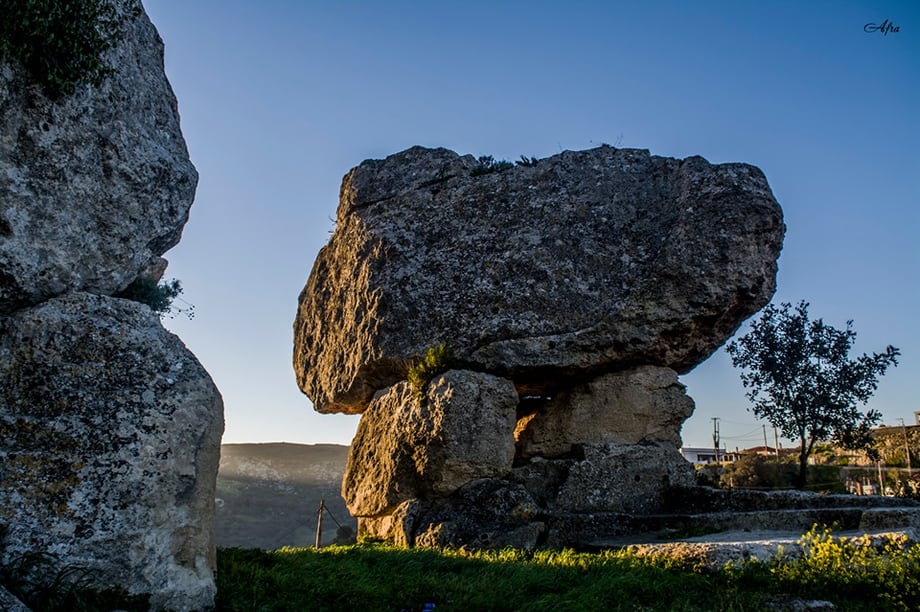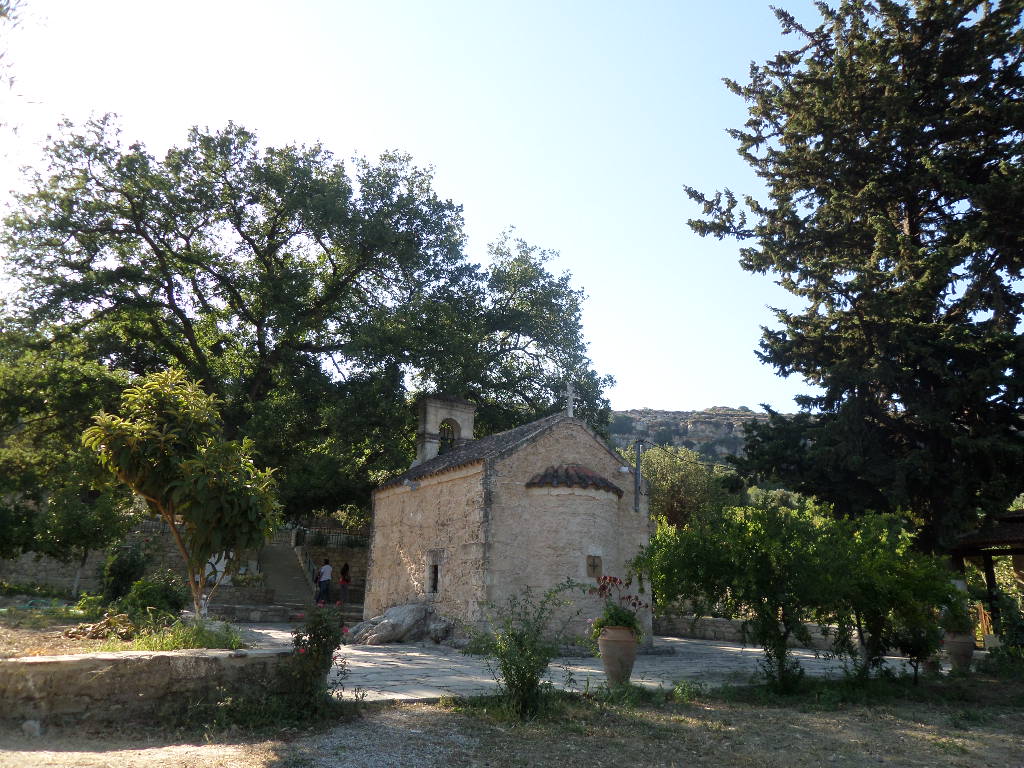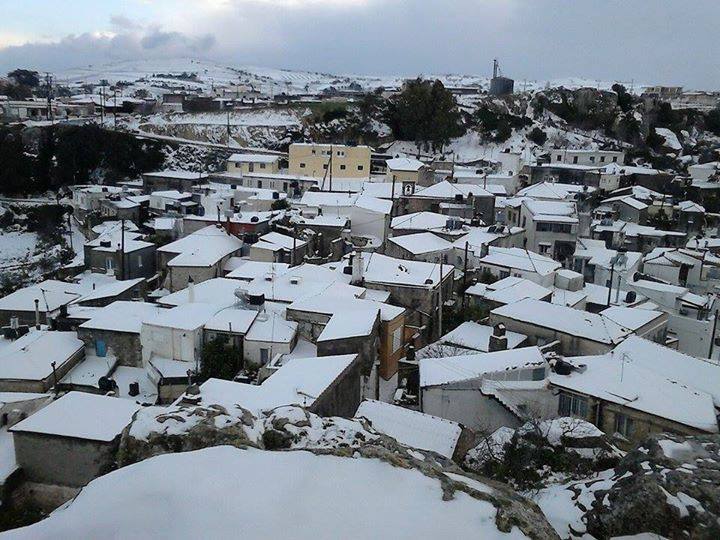Hidden in the hills of central Crete, far from the tourist-heavy coastlines and crowded resorts, lies a mysterious and unforgettable village. Agios Thomas isn’t on most travelers’ maps, but it absolutely should be. With over 30 rock-hewn tombs, ancient sanctuaries, Byzantine churches, and stunning natural landscapes, this tiny village in Heraklion feels like an open-air museum mixed with untouched Cretan life. Welcome to Agios Thomas – the village of eternity rocks.
A Village Shaped by Time
Agios Thomas (Άγιος Θωμάς) isn’t a modern attraction created for tourists. It’s a genuine, living village, with real people, homes, and traditions, layered over centuries of history. When you step into Agios Thomas, you’re not entering a museum or an archaeological site with ropes and plaques – you’re stepping into a place where life and antiquity coexist.
It’s believed that people have lived in this area for thousands of years, and the land holds onto its past tightly. Walking through the village feels like flipping through pages of a forgotten history book. Rocks here aren’t just part of the scenery – they hold secrets of life, death, and faith carved into their very core.
Where Is Agios Thomas?
Agios Thomas is located around 30 kilometers southwest of Heraklion, Crete’s capital city. It’s nestled in the hills near the fertile plains of Messara and surrounded by vineyards, olive groves, and rugged terrain. The drive takes about 40 minutes, and although the road curves through the mountains, the journey is pleasant and scenic.
You won’t see tourist buses here. In fact, many locals from Heraklion haven’t even visited. That’s part of what makes this destination so special.
The Eternity Rocks: What Makes Them So Unique?
The most incredible part of Agios Thomas is hidden in plain sight. Scattered across the village and its outskirts are massive stone structures, tombs, and sanctuaries carved into the rock by hand. These are the “eternity rocks” – ancient burial sites and sacred places that date back to Roman, Byzantine, and possibly even earlier periods.
More than 30 rock-cut tombs have been found here, many of them dug into steep hillsides. Some are simple holes in the stone, others are complex chamber tombs with carved entrances and steps leading down into the earth. These were built to last forever – eternity rocks, indeed.
What’s even more fascinating is how accessible they are. You don’t need a ticket or a guide. Many of the tombs are just there, between houses or behind gardens, sometimes even in people’s yards. You walk along the cobbled streets and suddenly find yourself face-to-face with a carved stone doorway to the ancient underworld.
Not Just Tombs: Sacred Places in Stone
Agios Thomas is not only about burial sites. Several sanctuaries carved into the rocks were places of worship, meditation, and shelter. One of the most remarkable is the rock-hewn chapel of Agios Stefanos, a small sacred place built directly into the mountainside. The atmosphere inside is cool, dark, and quiet – it’s a spiritual space that has remained untouched for centuries.
There’s also the Monastery of Agios Panteleimon, perched on a hill with panoramic views of the region. It’s not carved into rock but blends beautifully into the rocky landscape and gives a deep sense of peace. Although the monastery isn’t always open, even standing outside and looking across the valley is an experience.
A Labyrinth of Stone Paths and Hidden Icons
Walking around Agios Thomas is half the joy. The village is built on multiple levels, with narrow stone paths winding between old houses, olive trees, and carved monuments. Every few steps reveal something new: a weathered icon embedded in a wall, a forgotten archway, a path that leads to another carved tomb or ancient chamber.
There are no signposts or polished tourist guides. You have to explore with your eyes and your intuition. And that’s what makes it special. Every visitor feels like an adventurer, rediscovering something lost.
Byzantine Churches and Living Tradition
The village also houses several small Byzantine churches, some of which date back nearly 1,000 years. These churches are often simple and humble, but their interiors are rich with faded frescoes and wooden icons. Many are still used by local families during name days and holidays. You might be lucky enough to hear the sound of chanting coming from inside, or see a priest performing a private liturgy.
Agios Thomas isn’t just about the past – it’s about continuity. People still live, pray, work, and celebrate here. Time hasn’t stopped, it just flows differently.
What to Eat and Where
There are no flashy restaurants in Agios Thomas, but there are a couple of local tavernas where you can enjoy some truly authentic Cretan food. One of the best is located near the village square and serves dishes made with ingredients grown right in the surrounding hills.
Expect to find fresh goat cheese, olives, roasted lamb, seasonal greens, and handmade bread. Try the snails if you’re feeling adventurous, or stick to dakos (Cretan salad with barley rusk and tomatoes). Meals here are simple, hearty, and extremely affordable – you can eat well for under €12 per person, including wine.
Local raki is always offered with a smile, and don’t be surprised if the taverna owner sits down to talk with you. Hospitality here is real and heartfelt.
Practical Tips for Visiting
Agios Thomas is a great day trip from Heraklion, but you can also combine it with other nearby sites like the ancient city of Gortyna or the monastery of Panagia Kaliviani.
Wear comfortable shoes – the paths are uneven, and you’ll be climbing up and down stone stairways all day.
Bring water and snacks, especially in summer, as there are limited shops.
No entrance fees are required. The entire village is open-access, though some churches or tombs may be behind small fences or locked if privately owned.
A local guide can be helpful if you want a deeper historical perspective, but it’s not required to explore.
Photography is allowed, and the lighting is magical in the early morning and late afternoon.
Best Time to Visit
Spring and autumn are ideal times to visit Agios Thomas. The weather is mild, flowers are blooming, and the landscape is green and alive. In summer, it can get very hot and dry, especially in the afternoons.
Winter is quiet and calm, with a different kind of beauty. Some parts may be slippery after rain, but the stillness and lack of tourists can make for a very personal experience.
Avoid weekends if you want to be truly alone. Weekdays are best for peaceful exploration.
Why Agios Thomas Feels Different
There are many old villages in Crete, and many ruins to explore. But Agios Thomas is something else. It’s not cleaned up for tourists, not turned into a theme park. It’s raw, authentic, and utterly absorbing.
The combination of living culture, untouched archaeology, and natural beauty makes it a unique place. You feel like you’re walking between worlds – between now and then, between life and death, between stone and sky.
It’s not about seeing something famous. It’s about feeling something ancient. Something eternal.
How to Get There
From Heraklion, take the road towards Agia Varvara. Before you reach the town, you’ll see signs for Agios Thomas. The drive takes about 40 minutes. The roads are paved and in good condition, though narrow in places.
Public buses do not go directly to the village. Renting a car is the best option. You can also take a taxi from Heraklion, which may cost around €40–50 one way. If you’re in a group, this can be very reasonable.
There is parking near the village square, though spaces are limited.
A Final Thought
Agios Thomas is not a place to rush through. It’s a place to walk slowly, breathe deeply, and listen to the stones. You won’t find glossy souvenir shops or guided tours with headsets. You’ll find silence, texture, stories, and a kind of timeless dignity.
If you love hidden gems, meaningful travel, and places that haven’t yet been shaped by mass tourism, then Agios Thomas belongs on your list.
Just be respectful. The rocks are old, the tombs sacred, and the people proud of their home. Tread lightly, speak softly, and take your time.
Because in Agios Thomas, time isn’t measured in minutes – it’s carved in stone.





